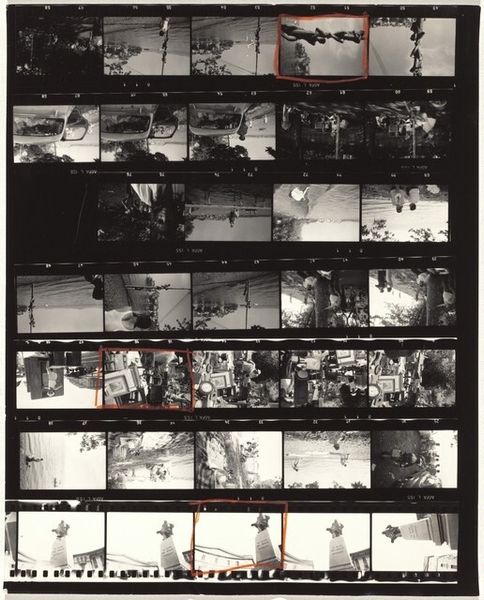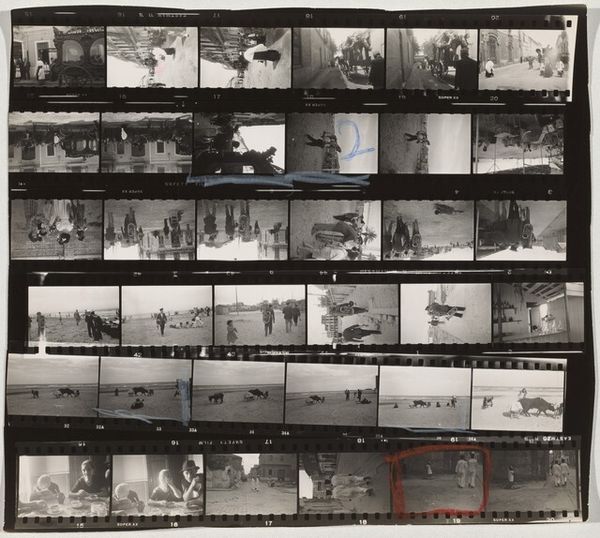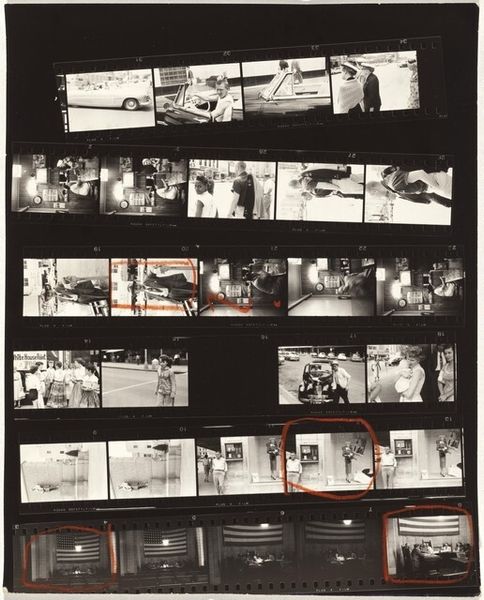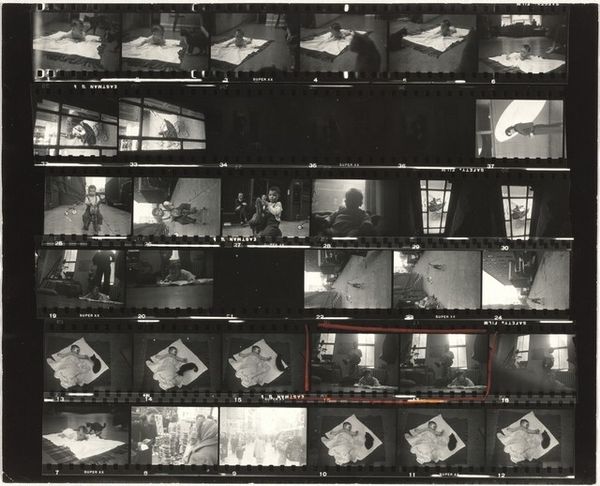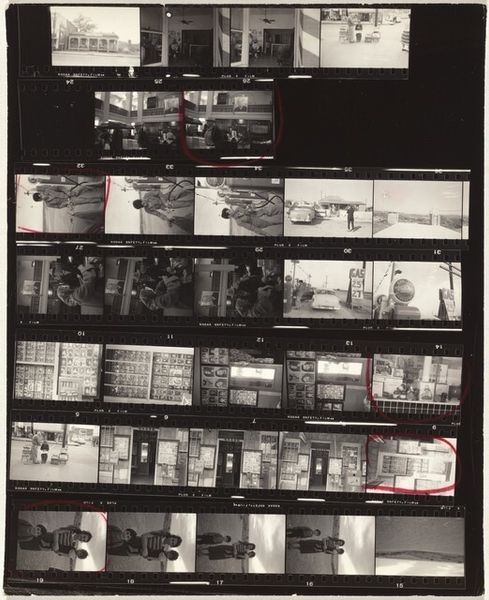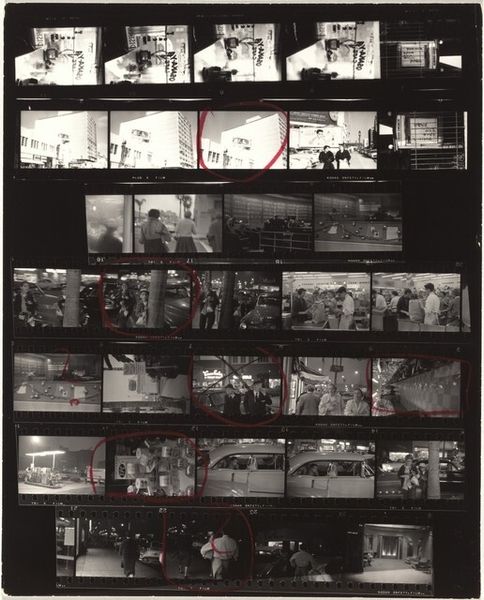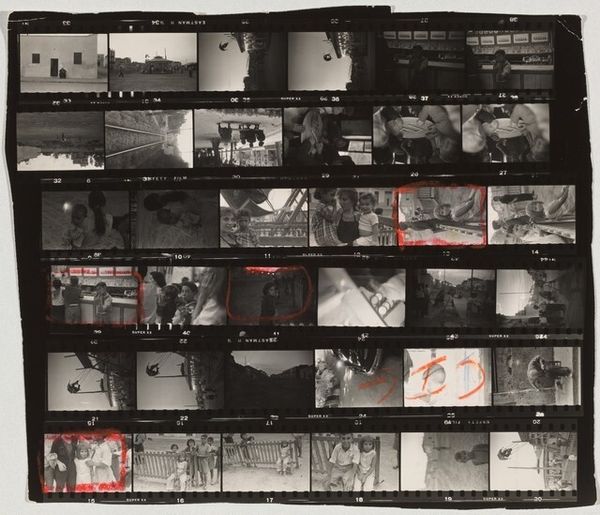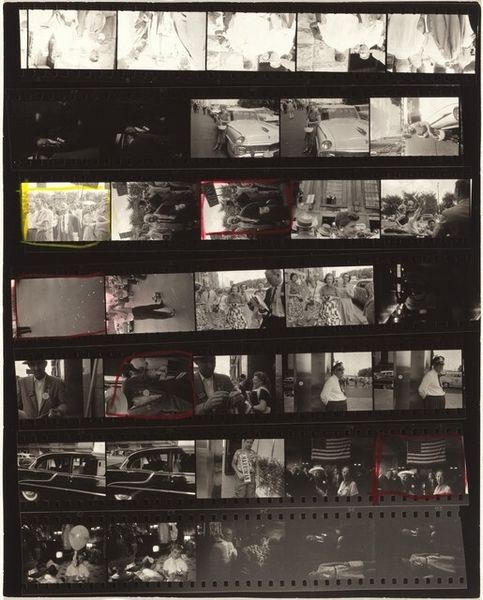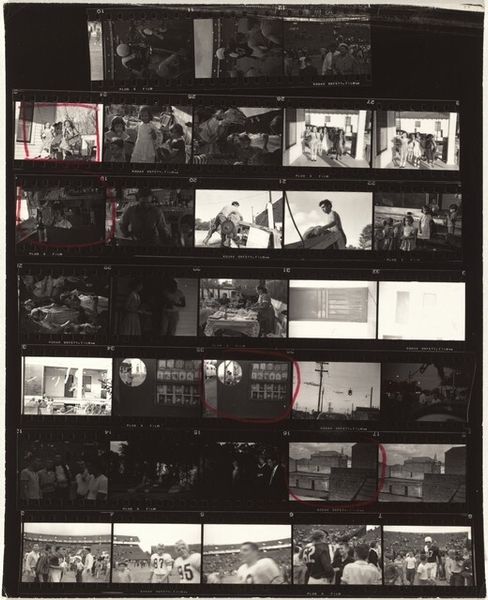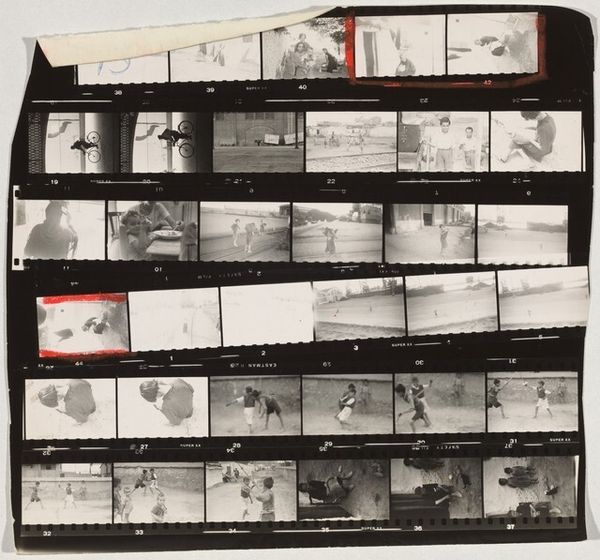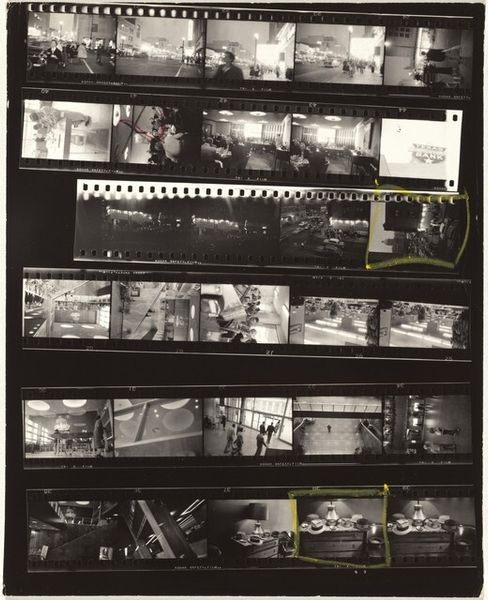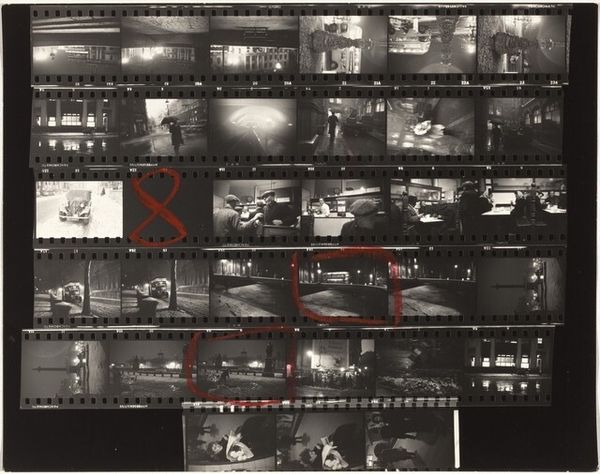
Dimensions: overall: 18.2 x 20.4 cm (7 3/16 x 8 1/16 in.)
Copyright: National Gallery of Art: CC0 1.0
Curator: Robert Frank’s “Valencia, Spain 7,” made in 1952, presents a fascinating glimpse into his working process. It is a photographic print showing a contact sheet marked with selection notations. Editor: What immediately strikes me is the layering—images upon images, creating an almost dizzying effect. The contrasts between light and dark are so stark. Curator: The contact sheet itself acts as a visual narrative, documenting Frank's encounters and observations in post-war Spain. His Swiss-Jewish background definitely gave him a particular sensibility toward outsidership, especially relevant to a Spain that was very Catholic, very rooted in its traditions, while slowly starting to emerge from dictatorship. This work could be viewed as part of a broader movement to reveal marginalized histories and the effects of power structures on everyday lives. Editor: Yes, and technically it is fascinating how he uses the frame within the frame. Each image on the sheet contains its own internal composition, with varying degrees of focus and light exposure, some vignettes showing scenes of ordinary life; then this overall object, with annotations that further isolate his chosen frames. There is a compelling structural rhythm in that contrast. Curator: Precisely. Frank's markups provide valuable insight into his selection process. The red pencil highlights, and the other various marginalia point to what he found compelling, perhaps moments he considered visually or emotionally resonant. We see how social dynamics play out. Even the presence of Frank—the implied photographer, observer, interpreter—becomes a key element in the photograph's meaning. Editor: It also draws our eye to his method. The rough quality adds to its rawness—making the selection and composition seem almost performative and a kind of meta-commentary on photographic selection and truth. It’s quite powerful! Curator: It is a multilayered reflection of Frank's vision and artistic sensibilities, embedded in both social and formal complexities. Editor: Seeing the photograph broken down like this creates new paths for appreciation, showing the bare bones from which artistic visions come to life.
Comments
No comments
Be the first to comment and join the conversation on the ultimate creative platform.

